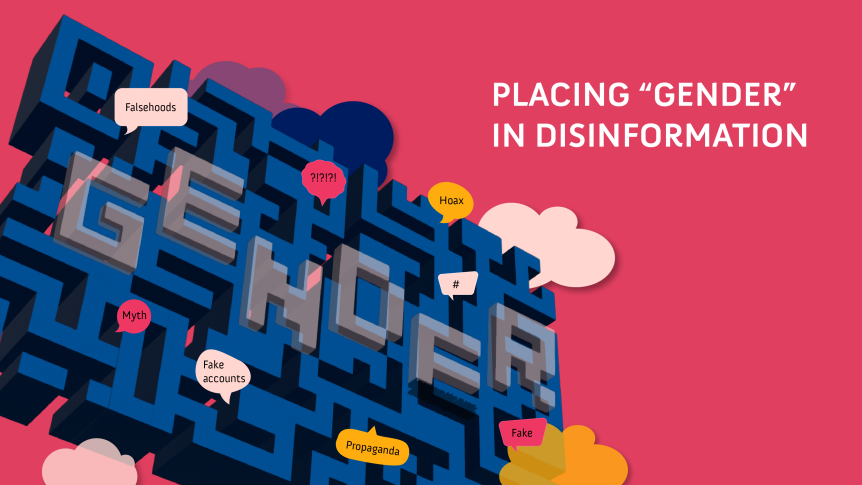
In a recent survey carried out with women journalists by UNESCO and the International Center for Journalists (ICFJ), 73% of the respondents (n=456) who identified as women said they had experienced online violence in the course of their work. The Troll Patrol project, a collaboration between Amnesty International and Element AI, surveyed millions of tweets received by 778 journalists and politicians from the UK and US over the period of one year and found that 7.1% of the tweets sent to these women were “problematic” or “abusive”. This amounted to 1.1 million tweets mentioning 778 women across the entire year, or one every 30 seconds. Plan International interviewed 14,000 girls across 31 countries in the study Free to Be Online? and concluded: "Girls are targeted online just because they are young and female, and if they are politically outspoken, disabled, Black or identify as LGBTIQ+, it gets worse. [...] Like street harassment it is unremitting, often psychologically damaging and can lead to actual physical harm."
The evidence of a grave problem is overwhelming. The Association for Progressive Communications (APC) has worked to render visible the impact of technology-facilitated gender-based violence (TFGBV) for more than two decades. We have worked with women’s organisations and advocates to identify, monitor, analyse and combat uses of the internet and digital technologies that are harmful to women and marginalised communities, and with individual internet users to assist them in using technology to document and combat TFGBV and challenge harmful sexist online practices. We have also advocated for internet policies and regulations that enable the expression, protection and promotion of human rights, women’s rights, and the rights of people of diverse sexualities to both states and private sector actors.
Over the past few years in particular, we have seen how online TFGBV has moved from a peripheral discussion in both the women’s rights and internet rights communities to occupying a central space in conversations about a free and open internet.
TFGBV is part of the continuum of offline-online gender-based violence and, as such, occurs in all countries, contexts and settings; it is a pervasive violation of human rights, and is a “manifestation of the historically unequal power relations between women and men and systemic gender-based discrimination.” With advances in technology and our changing relationships with it, however, the concrete manifestations of TFGBV have also evolved. One of these manifestations that deserves special attention today, in APC’s view, is gendered disinformation.
In order to better capture the variety of problems women and gender-diverse people face when expressing their views and opinions, APC co-organised a series of consultations during 2023 to collect further information on their lived experiences, in different cultures and geographies. These in-depth conversations pointed to the fact that gender-based violence, hate speech and disinformation are different challenges that sometimes overlap, and that intersecting areas have been abused and used as an excuse to limit expression that is legitimate or legally protected – including expression on gender-related issues. At the same time, cases that amount to incitement to hatred, discrimination and violence have not been duly investigated and punished.
The relationship between these concepts – online gender-based violence, disinformation and hate speech – is complex and multilayered. One reason for this is that, more than mere theoretical concepts, they reflect the many imbricated manifestations of discrimination, inequality and violence that women and gender- diverse individuals experience day after day. Despite these compounding layers of complexity, however, it is important to recognise gendered disinformation as a specific phenomenon that lies at the intersections of different concepts and that should be made explicit if better responses to address it are to be developed.
There is no one definition of gendered disinformation that is broadly agreed on or commonly accepted. The term is often used interchangeably with TFGBV, or is referred to as the gender dimensions of disinformation. Disinformation itself remains an expression that lacks a single agreed upon definition and is too often conflated with other concepts, such as propaganda and advocacy to incite discrimination, violence and hostility. The UN Special Rapporteur on freedom of expression and opinion has expressed concern with the growing use of manipulation, deception and the distortion of information, aimed at creating confusion. These conceptual challenges testify to the fact that disinformation is a multifaceted phenomenon.
APC considers it important to characterise gendered disinformation because it relates to a specific type of violation of women’s and gender-diverse people’s rights, in particular their freedom of expression, which is not properly encapsulated by other concepts. By failing to talk about gendered disinformation and trying to clarify its meaning, we may be contributing to the invisibilisation of particular situations of abuse that require specific and targeted responses.